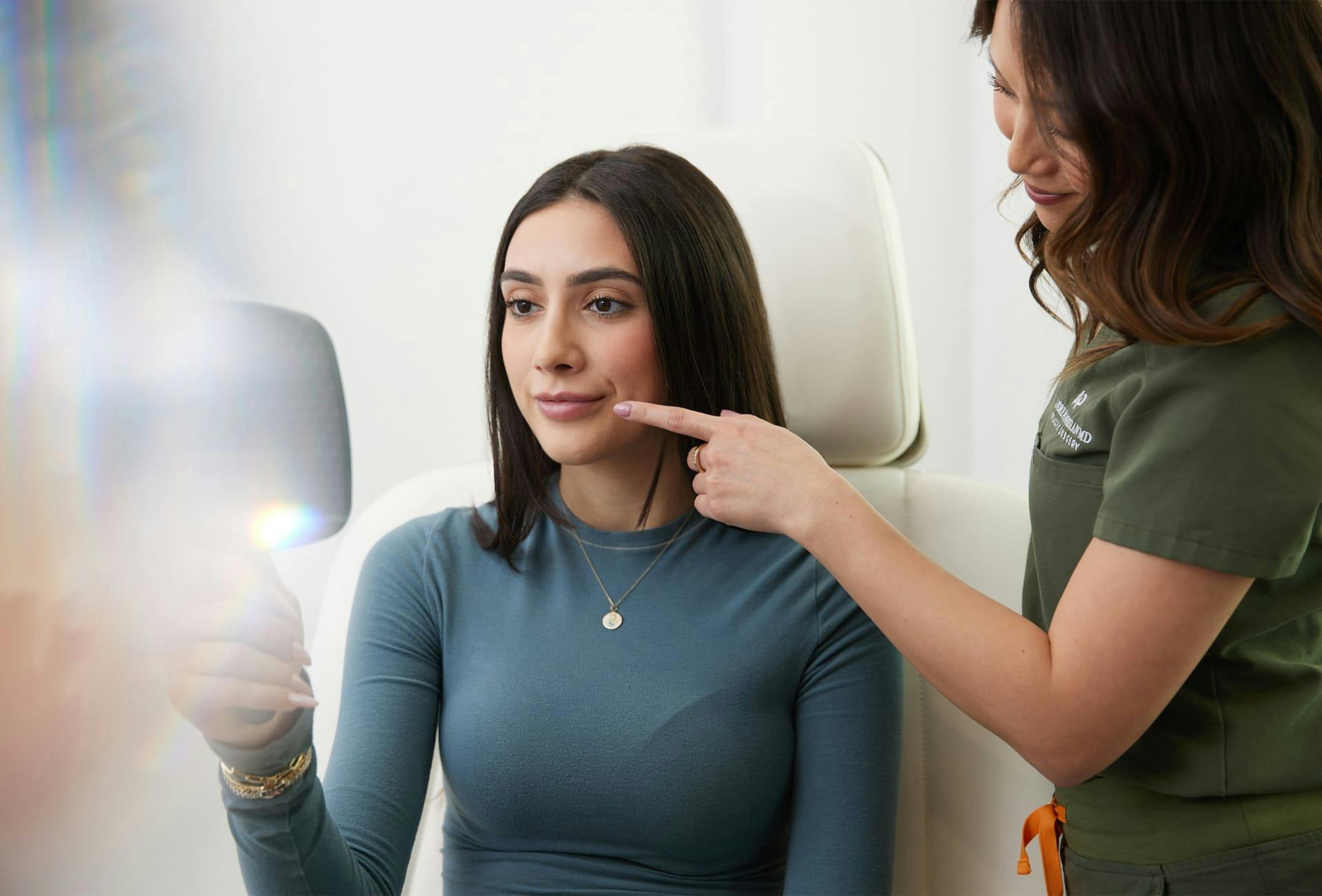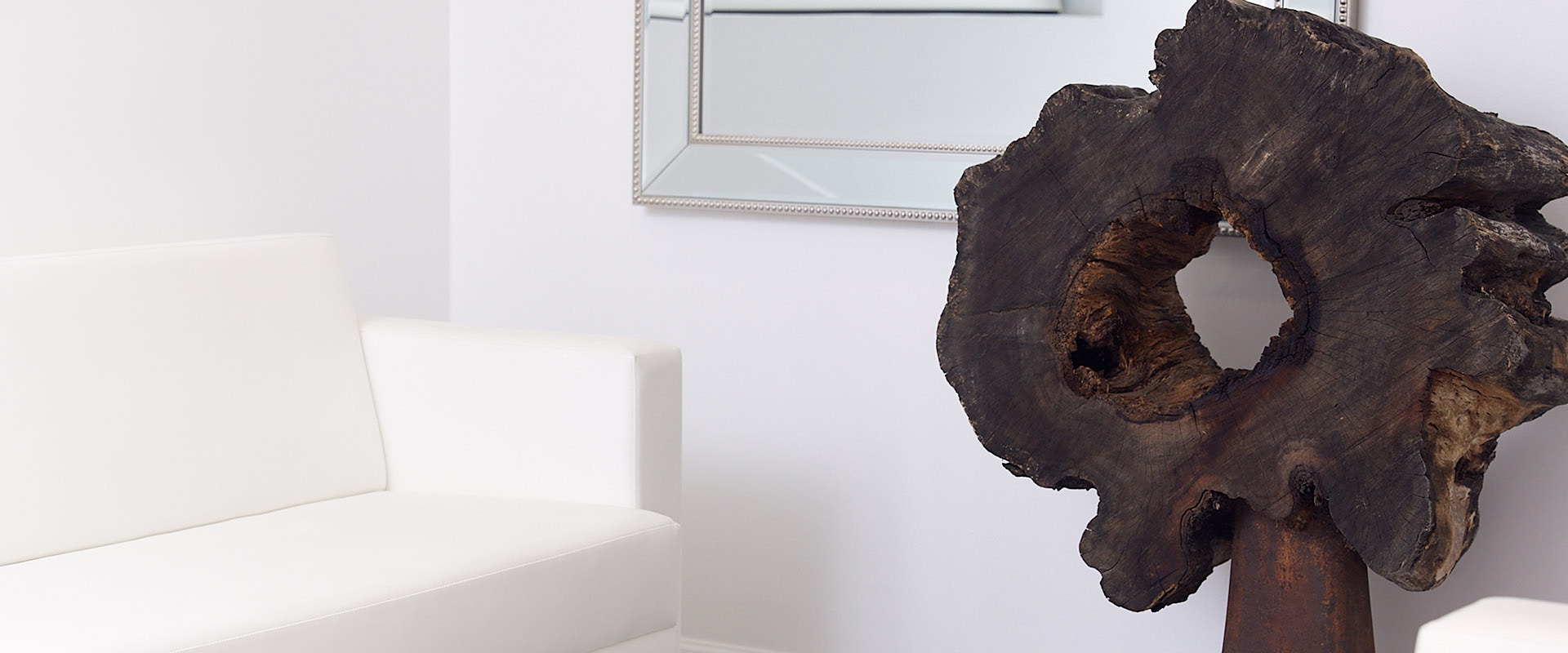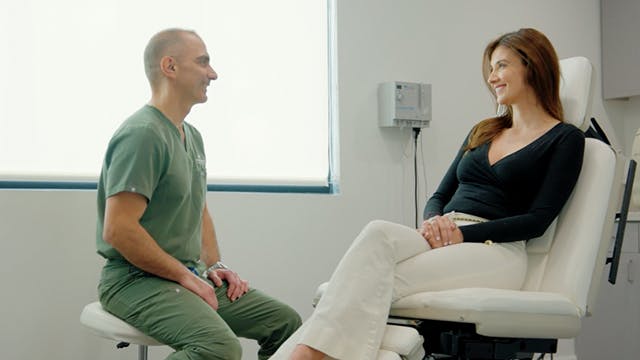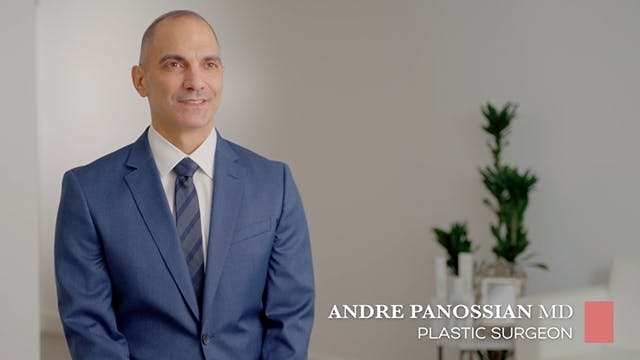Unlock the power of facial expression with facial reanimation, a transformative procedure that offers renewed movement and symmetry to the face, restoring both function and confidence.


Take Your Power Back with Dr. Panossian in Pasadena
Embarking on the journey of facial reanimation is a significant step towards reclaiming control over your expressions and restoring confidence in your appearance. With Dr. Panossian's specialized training in facial paralysis reconstruction under renowned experts like Dr. Ron Zuker and craniofacial surgery at Harvard Medical School, he instills trust and hope in patients embarking on this transformative process. Whether you're grappling with the aftermath of Bell's palsy, facial nerve trauma, or other congenital conditions, Dr. Panossian's compassionate care and expertise offer reassurance on your path to renewed facial movement and emotional well-being.

What Is Facial Reanimation?
Facial reanimation is a specialized field within plastic and reconstructive surgery that aims to restore movement and symmetry to the face in individuals with facial paralysis. This comprehensive approach involves surgical interventions designed to reanimate the muscles of facial expressions, allowing patients to regain control over their facial movements and expressions. Restoring facial movement is not merely a matter of aesthetics; it profoundly impacts an individual's quality of life. Facial expressions are crucial in communication, social interaction, and emotional expression. For those with facial paralysis, the inability to smile, blink, or convey emotions through facial expressions can significantly affect self-esteem, interpersonal relationships, and overall well-being. Various techniques are employed in facial reanimation, tailored to each patient's unique needs and circumstances. These techniques may include muscle transfers, nerve grafts or transfers, and other innovative approaches. Each method aims to reestablish neural connections, activate dormant muscles, and recreate the intricate movements of the face. Through meticulous surgical planning and execution, facial reanimation surgery in Pasadena & Glendale with Dr. Panossian offers hope for improved function and appearance, empowering individuals to live more fulfilling lives.
Conditions Treated with Facial Reanimation
Facial reanimation surgery addresses various conditions characterized by facial paralysis or weakness. Some of the common conditions treated with facial reanimation techniques include the following:
- Bell's Palsy: Bell's palsy is a temporary form of facial paralysis caused by inflammation of the facial nerve. It leads to sudden weakness or drooping on one side of the face.
- Moebius Syndrome: Moebius syndrome is a rare congenital disorder characterized by facial paralysis and other cranial nerve abnormalities affecting facial expression and eye movements.
- Facial Nerve Trauma: Traumatic injuries to the facial nerve, such as fractures or lacerations, can result in partial or complete facial paralysis, necessitating surgical intervention to restore function.
- Tumors Affecting the Facial Nerve: Tumors arising near or compressing the facial nerve can disrupt its function, leading to facial paralysis or weakness. Surgical resection of these tumors may require facial reanimation procedures to restore facial movement.
- Congenital Facial Paralysis: Congenital conditions involving absent or underdeveloped facial nerves, such as hemifacial microsomia, may benefit from facial reanimation surgery to improve facial symmetry and function.
- Post-Stroke Facial Paralysis: Stroke-induced damage to the facial nerve or its central connections can result in facial paralysis or weakness, necessitating rehabilitation and possibly surgical intervention for reanimation.

Facial Reanimation Treatment Options
As a form of facial paralysis treatment, facial reanimation encompasses a range of surgical techniques to restore facial movement and expression in individuals with paralysis or weakness. Dr. Panossian specializes in various treatment options for facial reanimation, tailored to each patient's unique needs and condition. These treatment options may include the following:
Temporalis Myoplasty
Dr. Panossian's signature procedure for facial reanimation is temporalis myoplasty. It involves harvesting the temporalis muscle from the temple region and rerouting it to power smile movement on the affected side of the face. This innovative technique significantly improves smile symmetry and facial function, enhancing overall aesthetics and quality of life for patients.
Gracilis Muscle Transplant (Cross-Face Nerve Graft)
In cases where the facial nerve is severely damaged or absent, a gracilis muscle transplant combined with a cross-face nerve graft may be performed. This procedure involves transferring the gracilis muscle from the inner thigh to the face and connecting it to the healthy side of the face via a nerve graft, allowing for voluntary smile movement.
Gracilis Muscle Transplant (Masseter Nerve)
Another approach to gracilis muscle transplantation involves innervating the muscle with the masseter nerve responsible for chewing. This technique can restore smile function by utilizing the masseter nerve to power the transplanted muscle, resulting in improved facial symmetry and movement.
Cross-Face Nerve Graft
Cross-face nerve grafting is a nerve transfer procedure used to establish communication between the healthy facial nerve on one side of the face and the paralyzed side. By bridging the gap with a nerve graft, this technique facilitates the transmission of signals from the healthy nerve to the paralyzed muscles, enabling voluntary movement and expression.
Nerve Transfers
Nerve transfer procedures involve rerouting functioning nerves from other body areas to innervate the paralyzed facial muscles. This approach aims to restore voluntary movement and expression by bypassing damaged or non-functioning facial nerve segments.
The Benefits & Risks of Facial Reanimation
Facial reanimation surgery offers hope to individuals affected by the variety of conditions characterized by facial paralysis or weakness by providing opportunities to regain facial movement, expression, and quality of life. Learn about the benefits of facial reanimation below:
- Restored Facial Movement: Facial reanimation procedures restore voluntary movement to paralyzed or weakened facial muscles, allowing for natural facial expressions and smiles.
- Enhanced Facial Symmetry: By addressing facial asymmetry caused by paralysis, facial reanimation improves facial symmetry and restores facial balance.
- Improved Speech and Swallowing: Restoring facial muscle function can enhance speech articulation and swallowing coordination, improving communication and quality of life.
- Boosted Confidence and Self-Esteem: Regaining the ability to smile and express emotions empowers individuals with facial paralysis, boosting confidence and self-esteem in social and professional interactions.
- Reduced Functional Impairments: Facial reanimation treatments alleviate functional impairments associated with facial paralysis, such as difficulty closing the eyes, speaking clearly, and eating.
- Enhanced Quality of Life: By restoring facial function and expression, facial reanimation enhances overall quality of life, allowing individuals to engage more fully in daily activities and interactions.
While generally safe and effective, facial paralysis treatment carries inherent risks and potential complications, as with any surgical intervention. These risks may include infection, bleeding, scarring, nerve damage, asymmetry, and dissatisfaction with cosmetic outcomes. Additionally, there is a risk of partial or inadequate facial movement and the need for additional procedures or revisions to achieve desired results. It's essential for patients to thoroughly discuss these potential risks with their surgeon and carefully weigh the benefits against the potential complications before proceeding with facial reanimation surgery. Close post-operative monitoring and adherence to recommended guidelines can help minimize risks and optimize outcomes.

Why Choose Dr. Panossian?
Choosing Dr. Panossian for facial reanimation surgery in the Pasadena & Glendale area ensures access to the expertise of a world-renowned specialist. With his extensive training in craniofacial surgery and recognition for innovative contributions to the field, including developing the temporalis myoplasty procedure, patients can trust his skill and dedication to achieving exceptional results. Dr. Panossian's commitment to personalized care and his ability to address the emotional concerns and insecurities associated with facial paralysis make him the ideal choice for individuals seeking facial reanimation. Recognized by leaders in the field, Dr. Panossian was awarded the prestigious "Best Reconstructive Paper" by the American Society of Plastic Surgeons in 2016 for his groundbreaking work in developing advanced techniques for facial reanimation. Serving patients in Glendale, Pasadena, and beyond, Dr. Panossian is ready to help you take your power back. Take the first step towards restoring facial movement and confidence by scheduling a consultation with today.





